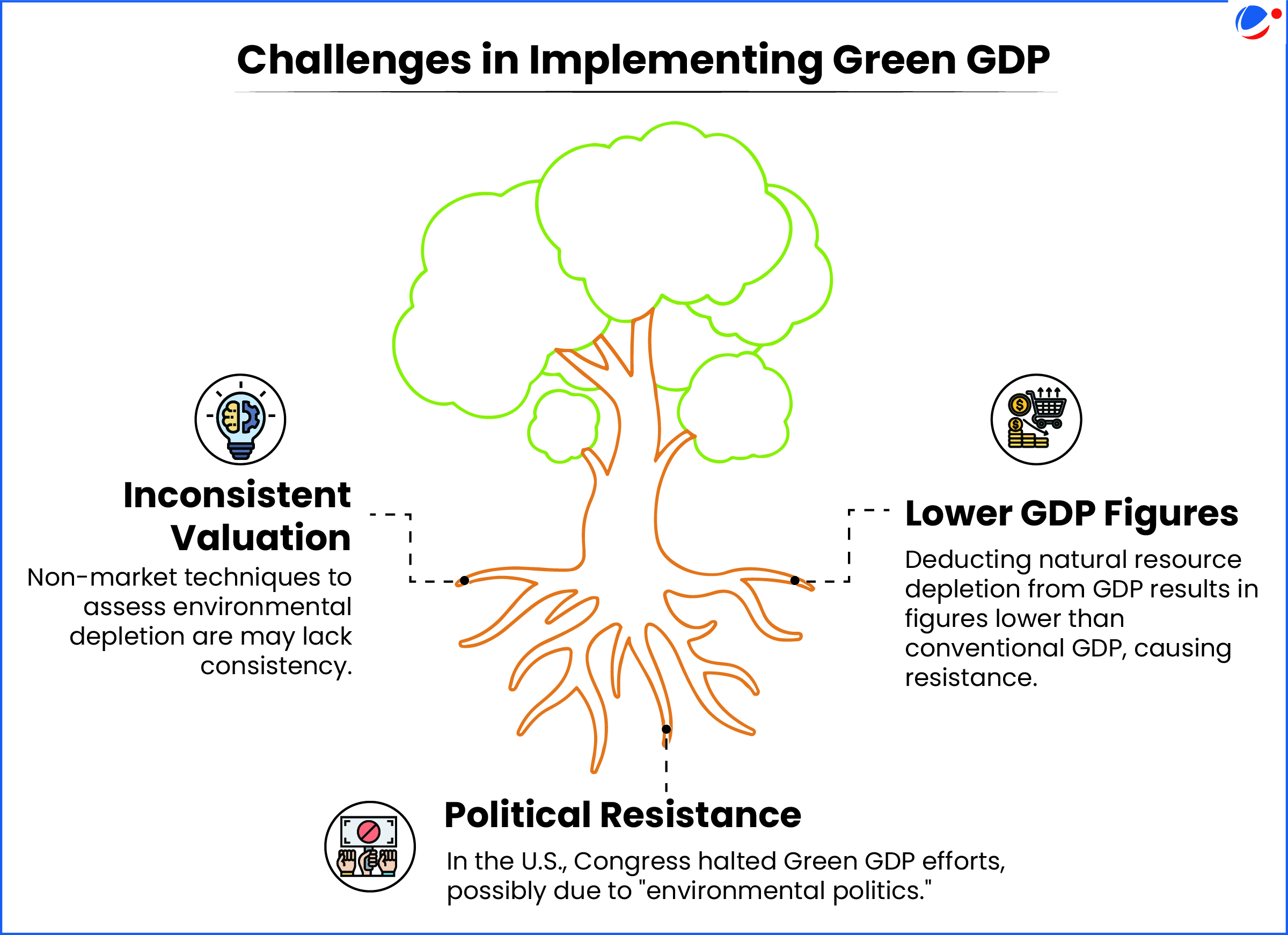
Chhattisgarh has introduced an innovative plan that connects ecosystem services of its forests with the Green GDP.
- The move highlight the direct link between significant environmental contributions of forests like clean air, water conservation, biodiversity and the state’s economic progress.
- Forest accounts for Chhattisgarh’s 44% of land cover playing crucial role in mitigating climate change.
- Also, forest products like tendu leaves, lac, honey, and medicinal plants contribute significantly to the rural economy.
About Green GDP
- Genesis: ‘Green GDP’ was coined in the late 1980s with aspiration to modify GDP better to reflect the impacts of economic activities on the environment.
- Definition: Green GDP refers to environmentally adjusted gross domestic product (GDP).
- Calculation:
- Green GDP = Net Domestic Product - (Cost of Depletion of Natural Resources + Cost of Degradation of Ecosystem)
- Need for Green GDP: GDP overlooks environmental depletion and degradation, often treating them as economic gains.
- For instance, cutting down a rainforest and selling the timber increases GDP but harms long-term wellbeing and growth.
Initiatives for Green GDP Accounting
- SEEA: In 1993, the UN introduced the System of Environmental Economic Accounting (SEEA) to standardize concepts and methods for producing internationally comparable statistics on the environment and its relationship with the economy.
- WAVES: Wealth Accounting and the Valuation of Ecosystem Services (WAVES) is a World Bank initiative to measure, value, and integrate natural capital into national economic accounts for sustainable development.



